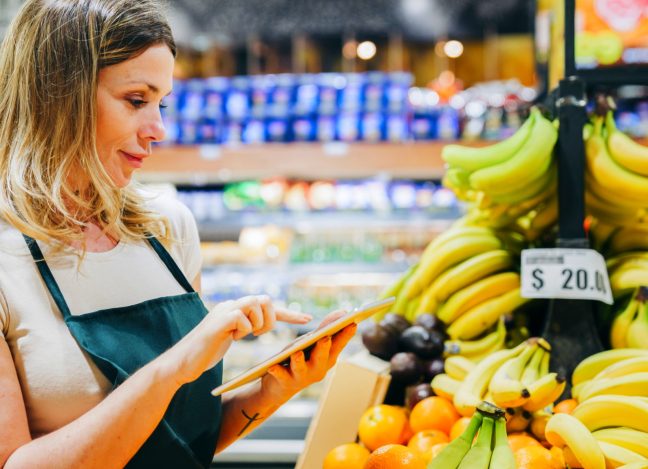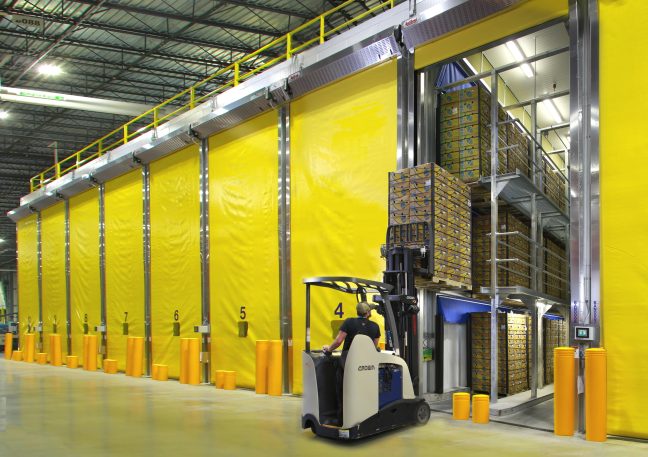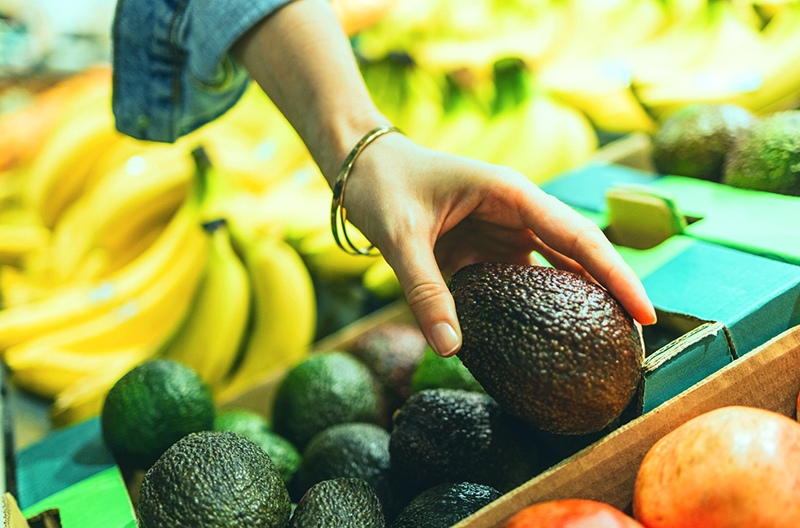Sponsored content 
We’re talking with Dennis Kihlstadius and Gary Campisi, aka The Produce Guys, two of the most experienced and well-known experts in fruit conditioning for the retail produce industry. Dennis has more than 35 years of experience as a ripening consultant. Current and former clients include the Pear Bureau Northwest, the National Mango Board, the California Avocado Commission, the tomato industries of California and Florida and other commodity boards looking for assistance with supply chain and ripening issues. Gary is the former senior director of quality control for produce, floral, meat and seafood at Walmart and Sam’s Club, where he spent decades implementing and overseeing the successful rollout of Walmart’s national ripening operations during their supercenter expansion. Gary is a consultant for some of the largest retailers and wholesalers in the industry as well as for Thermal Technologies, the industry’s leading designer/installer of commercial ripening room systems.

Q: Dennis, we’ll start with you. What are the trends you’re seeing in fruit conditioning today, and what challenges do you see retailers dealing with in regards to these trends?
Dennis: One of the biggest challenges I’m seeing right now is with the online ordering. Retailers are experiencing some real challenges when it comes to delivering quality produce ordered online that meets the expectations of the consumer. What retailers are finding out is just because someone is willing to order produce online doesn’t mean they’re willing to accept quality they consider to be subpar. Part of it has to do with order picking, since pickers are simply tasked with filling each order as quickly as possible for delivery, which doesn’t necessarily mean picking the best produce. And even if they are conscientious about the produce they’re choosing, they can only select from the stock on hand, which sometimes isn’t the best quality to begin with.
And unlike tooth paste, toilet paper or spaghetti sauce where you can specify a certain brand, when ordering produce you can’t really say you want a No. 4 color stage banana, or avocados that will be ready to eat tomorrow. You’re going to have to rely on whatever the picker chooses from the display and to be frank, that can lead to a disappointing experience for a whole lot of retail customers. So a trend we’re seeing is customers filling their non-produce grocery orders online, while still going out to the store to select their produce, leaving a real opportunity for retailers and suppliers who can figure out a way to deliver quality produce more effectively.
What I’m starting to see working with my clients is a real effort to take the picker out of the equation by conditioning the fruit properly before being put out on display so that any fruit bagged by the picker is going to be of acceptable or even superior quality. Of course that’s easier said than done because that really requires an effort on the part of all stakeholders from farm to store or harvest to store or however you want to put it. But the intent is there and I definitely see things moving in that direction.
Q: How about you, Gary? What trends and challenges are you seeing out there in the world of retail produce?
Garry: Well interestingly enough, I’m starting to see a trend where there really needs to be more education about ripening at the distribution center and warehouse level. It has a lot to do with the advancement of ripening room technology which, over the last 30 years, has made it so much easier to ripen truckload after truckload of bananas, avocados, pears, stone fruit or whatever to the exact stage you need, basically on demand. But the same technology that has made ripening easier and more efficient has also had the unintended consequence that many of the people in charge of ripening today increasingly lack the knowledge and experience of how ripening is impacted by key factors such as country of origin, transportation and storage, harvest season, etc., which can have a major impact on determining the ripening needs of fruit on arrival.
So tying it in to what Dennis was saying, if you’re looking for the best results at retail, whether for online orders or in-store, you need to be able to understand what you’re receiving and how to use the ripening technology that’s available to ensure you can achieve the desired results on a daily basis. If you don’t know how to do that based on the condition of fruit you receive then you’re going to have some issues – which is exactly what I’m seeing. Being able to come up with a solid game plan based on the condition of each individual shipment of fruit received is the recipe for success.

Being a ripening and technology consultant with Thermal Tech has put me into the distribution centers of many of the industry’s largest and most successful retailers and wholesalers. Where there’s an understanding that conditioning should be based on the needs of the fruit received as well as how it responds to the conditioning process, I find these programs to be the most successful. Where there’s a belief that fruit responded in a certain way last week so it should respond the same this week – that’s where we see problems because that is most definitely not always the case. That’s where I step in to help with further training because Thermal Tech really wants to make sure their rooms are being used correctly so their clients enjoy the results they expect day in and day out.
Dennis: Yeah, I remember a few years back when we realized we could condition mangoes in the same rooms Walmart was using for their bananas. Gary was still there back then. Working with The Mango Board, we proposed a conditioning program that we thought would be a real win for Walmart because the conditioned mangoes tasted so much better than the non-conditioned. Gary was skeptical at first if I remember correctly (Gary: yeah, yeah, hahaha), but to his credit we moved forward and Walmart’s mango sales increased 220 percent in just two years, which more than justified the investment. The conditioned mangoes looked better, tasted better and had a longer shelf life which taken together is why the program was so successful.
Gary: The same could be said about Walmart’s banana program. Over my 25 years working on the program, we went from processing 15,000 cases per week at one facility to 825,000 cases per week in 40 facilities. And throughout this entire period bananas steadfastly remained the number one sales item in dollars for Walmart Supercenters. 1 percent of total sales and 9 percent of total produce department sales. When factored in with ROI and the efficiencies and savings of doing all that ripening in-house, the profit margins became truly astounding. And having control over the quality of the product we had out on display, we were able to meet customer expectations at every supercenter. Of course, this required extensive training at all our distribution centers but the Thermal Tech rooms allowed us to standardize the training which made life much easier.

Dennis: Same for the mangoes. Having a standardized technology and platform for conditioning means you can always get the desired results as long as, as Gary says, you pay attention to the quality of what you receive. That holds true for mangoes, pears, avocados, bananas and I’m even seeing some interesting results conditioning papayas that I think are going to have a major impact.
Gary: Yeah, and tying it in to what Dennis was saying about online produce sales, the longer shelf-life and reduced retail shrink you get from fruit that’s been conditioned versus fruit that hasn’t makes a big difference, too. If the fruit looks better on the shelf longer, that gives the pickers a bigger window to bag nicer looking fruit, which will also retain its quality characteristics longer after it’s been delivered. It’s a win-win as far as the consumer goes, as long as it’s part of an overall program that can achieve that type of consistency right across the board every day. That’s the challenge.
Dennis: That’s really the key from my perspective too, which is why so much work is being done right now on the online component. We know we have the technology to achieve the consistent conditioning results with the Thermal Tech rooms. But being able to do it across a broad range of commodities, with the type of consistency that would enable you to order fruit for delivery that’s the same or better quality than if you went to the store and chose it all yourself? Well, I think we’re getting there. Whoever gets that type of program in place first is going to enjoy a distinct market advantage, for a little while anyway.
Gary: Right, until the rest of us see exactly how it’s done.
Dennis: Then we’ll just have to find another hill to climb.
Gary: Hahaha! How about a podcast called The Produce Guys.
Dennis: I like it!
OK, good luck guys! That’s it for now. Thanks for your time, we really appreciate it.
Gary Campisi can be reached at [email protected].
Dennis Kihlstadius can be reached at [email protected].

